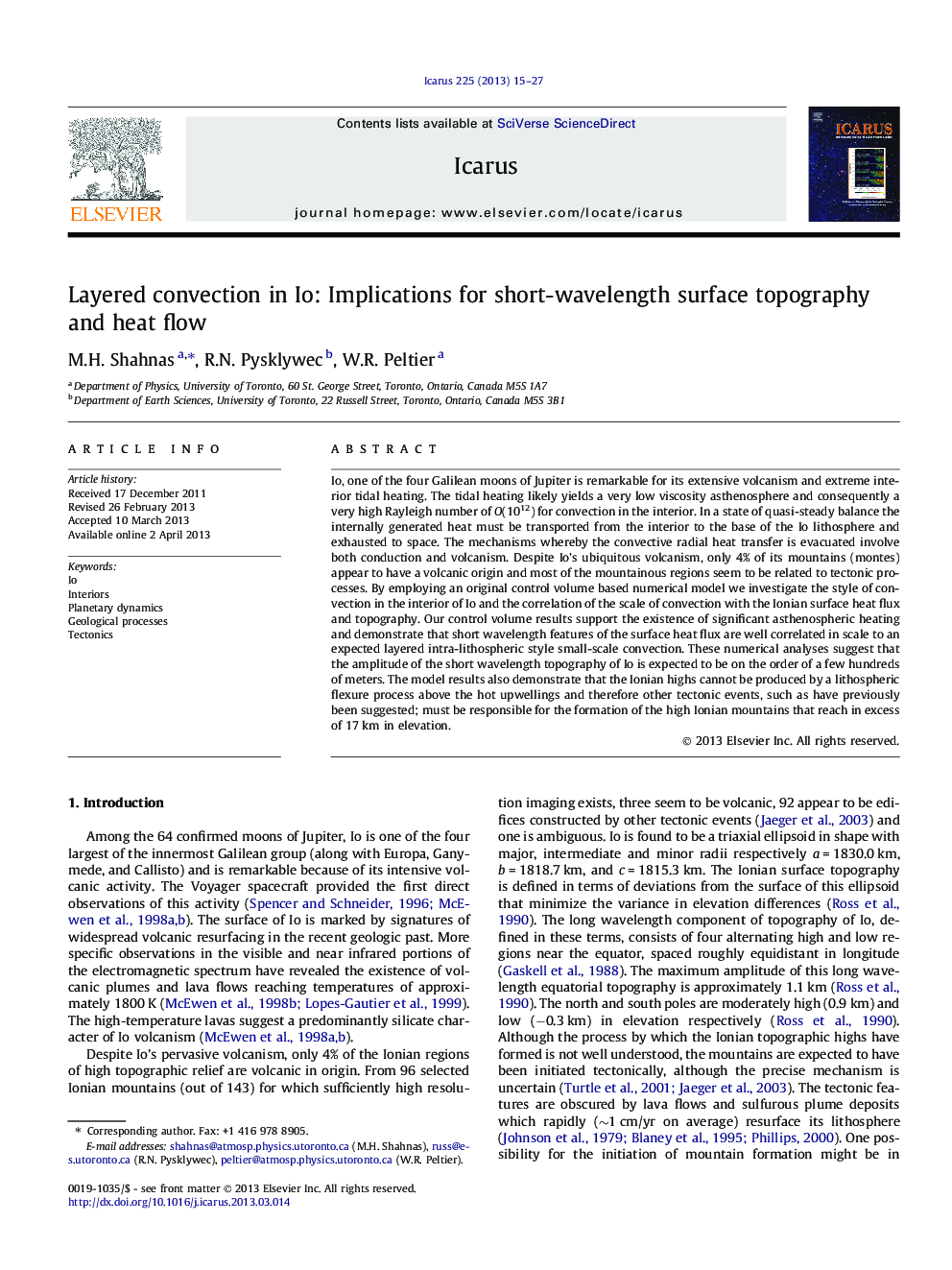| کد مقاله | کد نشریه | سال انتشار | مقاله انگلیسی | نسخه تمام متن |
|---|---|---|---|---|
| 1773183 | 1021122 | 2013 | 13 صفحه PDF | دانلود رایگان |

• Control volume results support the existence of significant asthenosphere heating.
• The convection in asthenosphere and the Ionian hot spots are correlated in scale.
• The expected short wavelength topography of Io is an order of a few hundred meters.
Io, one of the four Galilean moons of Jupiter is remarkable for its extensive volcanism and extreme interior tidal heating. The tidal heating likely yields a very low viscosity asthenosphere and consequently a very high Rayleigh number of O(1012) for convection in the interior. In a state of quasi-steady balance the internally generated heat must be transported from the interior to the base of the Io lithosphere and exhausted to space. The mechanisms whereby the convective radial heat transfer is evacuated involve both conduction and volcanism. Despite Io’s ubiquitous volcanism, only 4% of its mountains (montes) appear to have a volcanic origin and most of the mountainous regions seem to be related to tectonic processes. By employing an original control volume based numerical model we investigate the style of convection in the interior of Io and the correlation of the scale of convection with the Ionian surface heat flux and topography. Our control volume results support the existence of significant asthenospheric heating and demonstrate that short wavelength features of the surface heat flux are well correlated in scale to an expected layered intra-lithospheric style small-scale convection. These numerical analyses suggest that the amplitude of the short wavelength topography of Io is expected to be on the order of a few hundreds of meters. The model results also demonstrate that the Ionian highs cannot be produced by a lithospheric flexure process above the hot upwellings and therefore other tectonic events, such as have previously been suggested; must be responsible for the formation of the high Ionian mountains that reach in excess of 17 km in elevation.
Journal: Icarus - Volume 225, Issue 1, July 2013, Pages 15–27